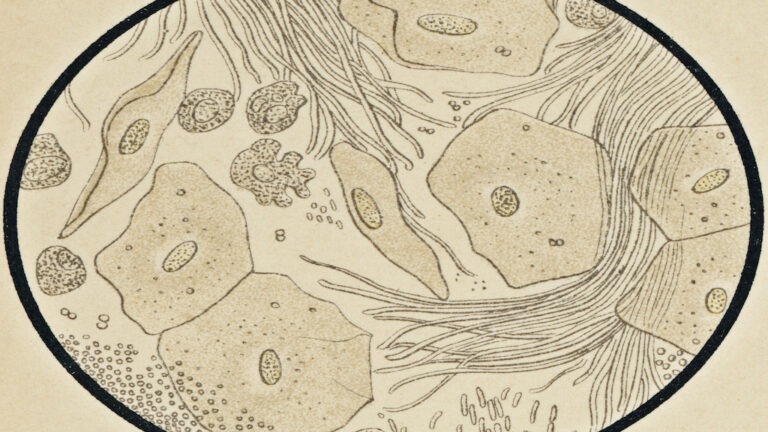Holistic Dentistry Can Help Reverse Cavities

Going to the dentist is a chore that almost no one looks forward to; it’s painful, expensive, and no matter what, you’ll probably be told you’re not flossing enough. Some dentists might tell you that your issues are a matter of genetics, but that’s probably not true. This led one dentist to the realization that the intrinsic problem is not a matter of legacy, but instead a matter of diet, realizing a way to reverse cavities simply by adjusting what one eats.
How to Get Rid of Cavities
We all know processed sugar and sweets are prime contributors to cavities, but there are also vitamins and nutrients that, when deficient in our diet, can lead to tooth decay. Calcium and Vitamin D are two of these nutrients we know are responsible for strong bones and healthy teeth. But what most don’t realize is that these vitamins can be neutralized by phytic acid in the digestive process. Phytic acid and phytates act as a storage mechanism of phosphorous in plants, but when consumed by humans they aren’t broken down, instead binding with other nutrients that neutralize them in the process.
So where do phytates come from? Grains, nuts, seeds, legumes, and in lesser quantities, vegetables. But aren’t these types of food essential sources of certain nutrients themselves? Well, yes, and the answer is complicated; phytates are also known to have antioxidant properties, and their binding effect can be good for people who consume an overabundance of minerals like iron.
The big takeaway is that an overabundance of phytates in your diet can lead to weaker teeth and more cavities if not balanced with an abundance of specific nutrients. And our diets are packed with foods that contain these phytates. With the average western diet containing copious amounts of processed sugars, grains, and vegetable oil, it’s no wonder the dental industry is booming.
From a young age, we’ve been exposed to this type of diet, with the food pyramid’s foundation consisting of bread, cereals, and wheat. Although sugar is the smallest segment of the pyramid, it has found its way into almost all of the food we eat. At the same time, meat and dairy are also small segments on the pyramid, but according to research based on a diet optimized for healthy teeth, these food groups should be your foundation.
Weston Price’s Holistic Dentistry
This diet was created by Weston Price, founder of the National Dental Association and pioneer in holistic dentistry. The concept of holistic dentistry isn’t a complete abandonment of modern dental hygiene practices, but rather it focuses on dental hygiene in the context of one’s overall health.
Price travelled all over the world visiting remote tribes in far-flung locations, from Aboriginals, to Eskimos, and Native Americans. He noticed that these indigenous people all had one thing in common; surprisingly healthy teeth. Price found that tooth decay was rare in these cultures and formative issues like crowding and misalignment were non-existent.

Price quickly attributed this to their non-westernized diet that often included fatty meats, fish, dairy and butter. He wasn’t pointing to a hyper-specific diet, instead it was a lack of the aforementioned elements of the westernized diet.
When indigenous people were introduced to the western diet, they soon experienced the same dental ailments that we are all so accustomed to. Price used these learnings to create a holistic approach of integrative dentistry.
The paleo diet that has become so trendy lately, is very similar to Price’s diet and may have even been inspired by it. Though the Weston Price Foundation points out that paleo is distinctly different from Price’s diet and avoids the key foods it intended to bolster.
Weston Price’s diet primarily considers fat and butter to be two ingredients that should be consumed regularly and liberally, while the paleo diet focuses on lean meats, no fat, and no butter. Where the two converge is in their aversion to grains and legumes, due to their high levels of phytates.
But while paleo is strictly no grains, Price’s diet concedes that grains, legumes, nuts and plants can be prepared in a way that neutralizes those phytates, before they neutralize the nutrients in your stomach. Price’s diet also promotes the consumption of lacto-fermented foods, especially vegetables as this is one method of prep that can limit or neutralize phytates; and it’s good for your gut microbiome.
While a large part of Price’s diet advocates the consumption of butter and milk, dairy intolerance is a pretty common modern malady. An acceptable alternative is ghee, or clarified butter. Ghee is essentially butter with the dairy solids removed and is high in calories and fat, but has no carbs or sugars – ideal for Price’s diet. Also found in butter and Ghee is Vitamin k2, a nutrient that has been labelled Activator X. Price’s diet touts the benefits of water-soluble and fat-soluble vitamins and k2 is very much a fat-soluble vitamin. The diet recommends a tablespoon or more of ghee or butter every day to attain this vitamin that can activate tooth mineralization.
Can Teeth Heal Themselves?
Inspired by Price’s approach, two of his colleagues set out to test whether his diet would work to reverse tooth decay in a set of children between the ages of five and six. One of the researchers was May Mellanby, whose husband discovered that the primary cause of the bone condition Rickets was due to vitamin D deficiency. With her husband’s work, Price’s idea of vitamin deficiency leading to tooth decay, probably made perfect sense.
The two launched a clinical study to test the theory which was eventually published in the British Medical Journal. Of the children in the group, all showed fully erupted or badly formed teeth with dental caries (cavities). They recorded the degree of hardness of the children’s teeth as well as other qualities they would measure after changing their diets.

By strictly controlling the children’s diets, much to their chagrin, they transitioned them from cereal-rich, to vitamin D and calcium-rich foods for a period of six months. They found that there was an arrest in the development of new and existing caries and even found in some cases a re-mineralization of teeth.
They also saw that on average, there were 4.7 teeth per child that showed signs of arrest in existing caries. Their study noticed that oatmeal was a specific contributor in the cereal category, which was a major staple of the children’s diets. Mellanby and her colleague conceded that their study was done on bed-ridden children who were not active, making it easier to feed them a carbohydrate-restricted diet. They said that for healthy children, completely cutting out carbs wasn’t necessary, but restricting them could have a significant impact on healthy teeth.
So, can teeth heal themselves? The answer is yes, through an integrative approach found in this style of holistic dentistry. Is it for everyone? No, the diet should be tailored to those who need it, want it, or can handle it.
And this is certainly not a call to abandon modern dental practices, though some aren’t comfortable with the abundant use of fluoride and other metals that are commonly used. But if anything, whether one embraces Price’s diet and the potential benefits it could deliver, it’s at least prudent to have a conscious, healthy diet for not just oral hygiene, but overall health as well.
New Study Looks at Ancestor's Gut Microbiome to Improve Health

A fascinating new study shows our gut microbiome has been experiencing a potentially catastrophic loss of diversity over the last millennium, possibly giving rise to various common chronic diseases. Is it too late to avoid irreversible damage to our health?
While most of us don’t ever think about it, we coexist with over 100 trillion microbes, the majority of which live in our gut and are essential to our health. Though the existence of the microbiome was first recognized in the 1990s, the full understanding of its importance and mechanisms is still in its infancy.
Dr. Alex Kostic is a microbiologist at Harvard Medical School, who has been studying the microbiome as a mediator of disease. “You know, this concept of the microbiome as a community of organisms living on humans and other mammals, and playing an integral role in our physiology really is a new concept, something that people have only been studying for the past 10-15 years or so,” Kostic said. “But what we’ve come to realize, as we study the ecology of all of the microorganisms living on humans, especially in the gut, is that it’s incredibly diverse, and pathogens are really the exception to the rule. Everything else has a lot of other roles that we’re still trying to tap into, but we can be fairly confident that they’re not driving disease in people.”
In their quest for a clear picture of the microbiome, researchers have recently turned to studying its history.
“What’s really gotten me interested in the history of the human microbiome, is this concept of being able to identify, if it exists, a ‘universal ancestral human microbiome,’ something that was common to all of us before the process of industrialization,” Kostic said.




































